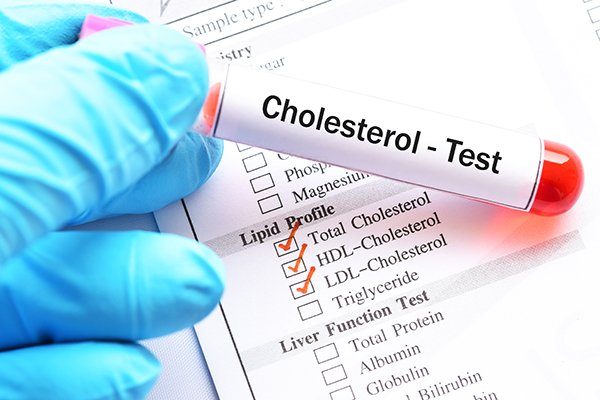
However, health professionals are now challenging whether LDL cholesterol, commonly referred to as "bad cholesterol," is really as bad as previously believed. Some studies even suggest that measuring LDL cholesterol isn't a foolproof way of assessing a patient's cardiovascular risk and that other tests may be more useful.
LDL particles vs. LDL cholesterol
According to James DiNicolantonio, a cardiovascular research scientist, many people with normal LDL cholesterol levels may still experience heart attacks.
He also clarified that the number of LDL particles, not LDL cholesterol, may be a more relevant risk factor.
Research findings suggest that LDL cholesterol levels predict higher cardiovascular risk 40 percent of the time.
On the other hand, apolipoprotein B (apoB) concentration – or the summation of all LDL particles and their precursors – is linked to elevated risk 70 percent of the time.
But how are LDL particles different from LDL cholesterol?
An LDL particle is a type of lipoprotein produced by the liver. Its main function is to deliver triglycerides from your liver to other cells in the body.
Transporting cholesterol could be considered as LDL's secondary function. The cholesterol that an LDL particle transports is called LDL cholesterol.
High-density lipoprotein (HDL) and LDL are both cholesterols, but their carriers are different. LDL cholesterol can leak into blood vessels, causing atherosclerosis, which is why it is considered "bad" cholesterol.
Meanwhile, HDL particles can reach into atherosclerotic plaque to absorb the cholesterol trapped inside, preventing further plaque formation and helping to protect against heart disease. This is why HDL cholesterol is considered "good."
According to nutritionist Jonny Bowden, this explains why labeling HDL and LDL cholesterols as good and bad is wrong.
Bowden likened measuring the number of LDL particles to counting the number of passengers in cars on a road. While it's obvious that more cars mean more congestion and traffic accidents, more passengers don’t necessarily indicate this. Additionally, traffic could still be congested even if passenger numbers are low or average.
Citing himself as an example, Bowden said his LDL cholesterol was around 100 or 110 mg/dL, which is very close to ideal levels.
But when Bowden received the results of the particle tests, they revealed something surprising. According to the test results, he carried many small, dense LDL particles in his blood and was at high risk for cardiovascular events.
One type of LDL is more harmful, data reveals
There are two types of LDL particles: those that are large and buoyant, and those that are small and dense.
The small and dense LDLs are much more atherogenic, or "contributive to atherosclerosis," while the large, buoyant LDLs are less so. These two types of LDLs are measured through advanced lipid testing.
At least 80 percent of the total LDL cholesterol level is comprised of the more harmless large, buoyant LDLs, and the atherogenic small, dense LDLs make up the rest. Fats can increase large, buoyant LDLs and decrease small, dense LDLs, while refined carbohydrates can help increase small, dense LDLs.
Professor Erik Froyen from California State Polytechnic University, Pomona, has demonstrated this in his work. Froyen has a doctorate in nutritional biology and his research investigates mechanisms by which fatty acids affect cancer and cardiovascular disease risk factors.
Some studies also indicate that consuming refined carbohydrates is more relevant than saturated fat in causing coronary heart disease.
Bowden compared large, buoyant LDLs with large volleyballs that float along in the water, moving with the tide. But small, dense LDLs are like golf balls that can get stuck between rocks, where they start oxidizing and accumulating until they form atherosclerotic plaque.
People with more large, buoyant LDLs are said to exhibit a pattern A type of cholesterol profile, and they are at low risk of atherosclerosis. However, others with more small, dense LDLs exhibit a pattern B cholesterol profile and are at risk of atherosclerosis. Additionally, their markers for metabolic disease risks may be elevated.
Small, dense LDLs carry less cholesterol than large, buoyant LDLs. This means you can have a normal LDL cholesterol level, but a pattern B cholesterol profile. (Related: Study: Late afternoon exercise helps control blood sugar, cholesterol and triglyceride levels.)
Carol Kirkpatrick, a lipidologist professor and head of the Wellness Center at Idaho State University, explained that for most people, overall LDL particle number is more significant than LDL size.
Kirkpatrick, who is also a registered dietitian nutritionist, added that while it is now known that small, dense LDLs may be important, it often ends up being a red flag for those who have metabolic dysfunction.
While recent studies have shown that large LDLs have a neutral effect on atherosclerosis, some experts and health professionals disagree.
Kevin Maki, a professor at Indiana University whose expertise is in preventing and managing cardiometabolic disease, said that statins, which preferentially reduce larger LDL particles, can lower cardiovascular risk.
However, the statin and LDL link has also been challenged. Dr. Robert Dubroff, a cardiologist, suggests that it's still unclear if the benefit of statins is because it lowers LDL.
While other medications can lower LDL, most of them have been tested in well-conducted randomized trials and showed no benefit. Dubroff thinks that there are interventions that can lower cardiovascular risk without lowering LDL.
Alternative markers for accurate testing
The advanced lipid test can better identify high-risk individuals with normal LDL cholesterol profiles.
Generally, the test looks at LDL particle numbers or apoB numbers, which provide the total number of someone's non-HDL lipoprotein particles.
Non-HDL particles include very-low-density lipoprotein (VLDL), intermediate-density lipoproteins (IDLs) and LDL particles.
VLDL and IDL are precursors to LDL particles, and a high non-HDL particle number suggests high LDL particles.
Unfortunately, advanced lipid testing isn’t always covered by insurance. To address this, health professionals sometimes offer alternative markers for examination.
Maki said that if he could only pick one thing to examine, he would choose non-HDL cholesterol, which is commonly called the "poor man’s apoB."
This test is covered by insurance and checks all the cholesterol carried in non-HDL lipoproteins. While it provides a weaker predictive value than apoB, it can offer a general indication of whether more particles are traveling in the bloodstream.
Bowden also suggests that the triglyceride-to-HDL ratio can be used to calculate insulin resistance.
High insulin levels encourage the destruction of HDL particles and the production of blood triglycerides. This results in more LDL particles, particularly small, dense, atherogenic LDL particles in the blood.
Markers for inflammation may also indicate a risk of atherosclerosis. Inflammation can cause C-reactive protein (CRP) levels to become elevated. CRP can enter blood vessels and bring about an atherogenic environment.
If you are worried about your heart health, the following lifestyle changes can help reduce your cholesterol levels and improve your overall well-being:
- Focus on beneficial monounsaturated fats like avocados, nuts and olive oil.
- Eat more foods with polyunsaturated fats, especially omega-3 fatty acids, such as fatty fish (e.g., herring, mackerel and salmon).
- Eat soluble fiber.
- Exercise regularly.
- Quit smoking and drinking alcohol.
Learn more about natural ways to support heart health and prevent heart disease at ReverseHeartDisease.news.
Watch the video below to learn how organic flaxseed oil can help support a healthy heart.
This video is from the Health Ranger Store channel on Brighteon.com.
More related stories:
Here are 4 reasons to include tree nuts in your diet.
Olive oil consumption found to reduce risk of death due to cancer, heart disease and Alzheimer’s.
Lipitor, a statin drug commonly prescribed to lower cholesterol, INCREASES risk of Type 2 diabetes.
Sources include:
Please contact us for more information.






















